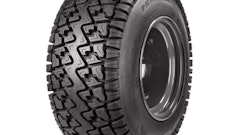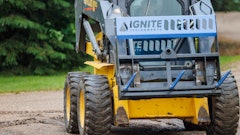
In the case of large tires, contractors in some areas report paying as much as 60% more than a year ago.
Tires are being rationed for some market segments and equipment is being shipped without tires or sold with used tires in some cases to fill customer orders in a timely manner. Availability of certain brands is also proving to be a problem.
Tire manufacturers and equipment suppliers are taking steps to limit the impact of the tire shortage on customers. Tire companies have new production facilities in the works, though this is unlikely to affect supplies in the short term. And manufacturers are working with alternative tire suppliers to promote on-time equipment deliveries.
As tire consumers, there are steps you can take, as well, to help ensure you have tires when you need them, and to keep existing tires in service longer.
First, review your potential tire requirements for the coming months. If at all possible, place tire orders well in advance of when you anticipate needing them. Be open to trying a different brand if your preferred brand is in short supply. And if tire demand is especially high in your area, consider stockpiling to eliminate the risk of a shortfall when you need the tires most.
Next, evaluate your tire management program. Are you effectively monitoring tire performance? If you don’t already do so, start tracking the number of hours of service life your tires provide. You may also be able to obtain projected service life based on the tire type, brand and application from the local dealer.
Once you have an average life expectancy to use as a baseline, you can determine whether the tires on a particular machine are failing prematurely. If so, evaluate the reasons behind it so you can take corrective action. Causes of premature failure include inadequate maintenance, poor operating practices, using the wrong tire for the application or exceeding the tire load rating.
Take a close look at your company’s tire maintenance practices to ensure appropriate procedures are being followed. Since low air pressure accelerates wear, make sure air pressure checks are a part of the required daily maintenance routine. In addition, tires should be checked regularly for leaks, cuts or other visible damage. Repairs should be made at the first sign of damage.
A good relationship with a qualified tire repair shop can work wonders for maximizing tire life. In many cases, damaged tires can be repaired and put back into service at a fraction of the cost of replacement. The shop may also be able to recommend sealants, fillers and other options to reduce puncture risks.
It's also important to communicate with your tire supplier whenever questions come up regarding the type of tire best suited for operating conditions, or the load rating for a particular application. The right tire can often be the deciding factor between getting maximum service life and operating performance, or dealing with frequent flats, costly downtime and rising tire replacement costs.


















